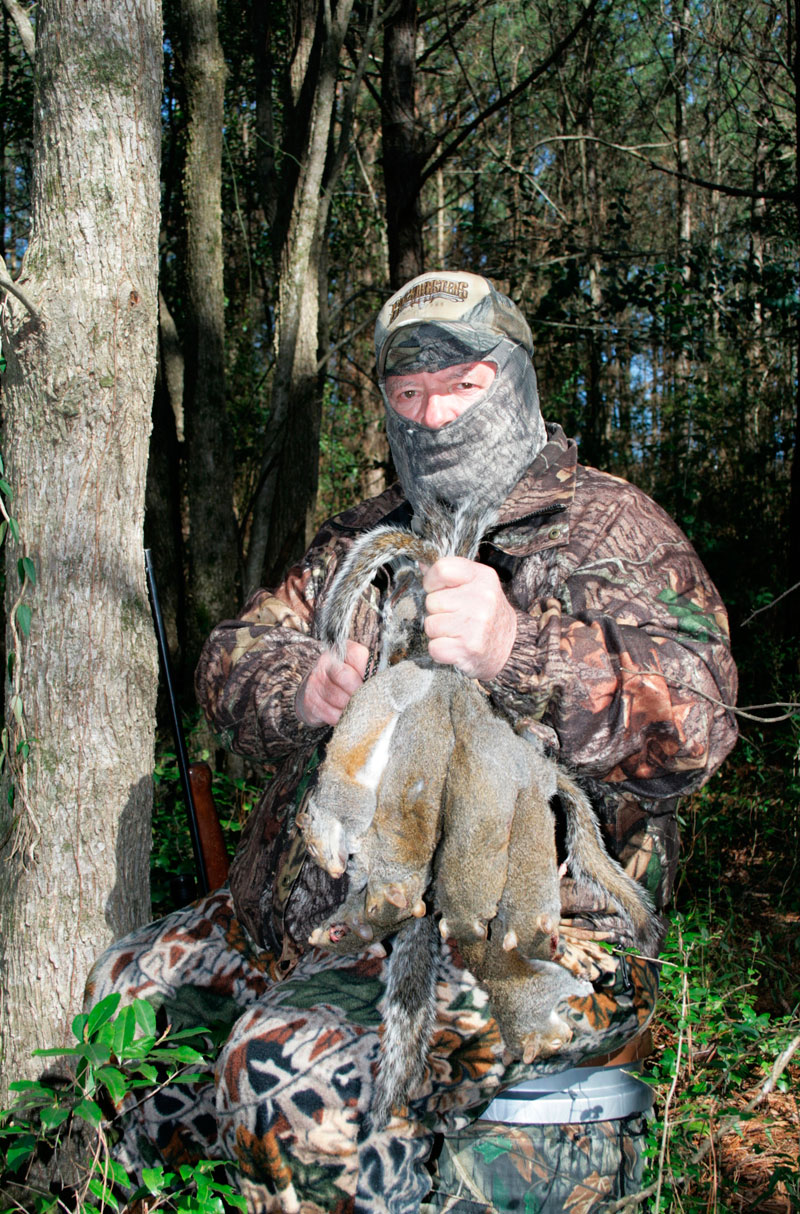
Winter is a great time to get squirrelly
Winter is a great time to hunt bushytails, especially the gray squirrel variety. Squirrels were once ranked at the top of the most popular hunting lists for both Carolinas, but have been passed by whitetail deer. But squirrel hunting is still popular and both states have abundant populations of gray squirrels.
Squirrels in the Carolinas
Both gray and fox squirrels are found in the Carolinas, but the gray is by far the more prolific and popular of these two primary species. The main reason is habitat. Prime gray squirrel habitat exists throughout both states, but fox squirrel habitat is often localized.
Michael Hook, Small Game Coordinator for the South Carolina Department of Natural Resources (SCDNR), said the population of gray squirrels in South Carolina is excellent.
“The potential for great squirrel hunting in South Carolina is excellent, but they are not literally everywhere,” he said. “Hunters still must scout to verify high squirrel populations exist where they plan to hunt.
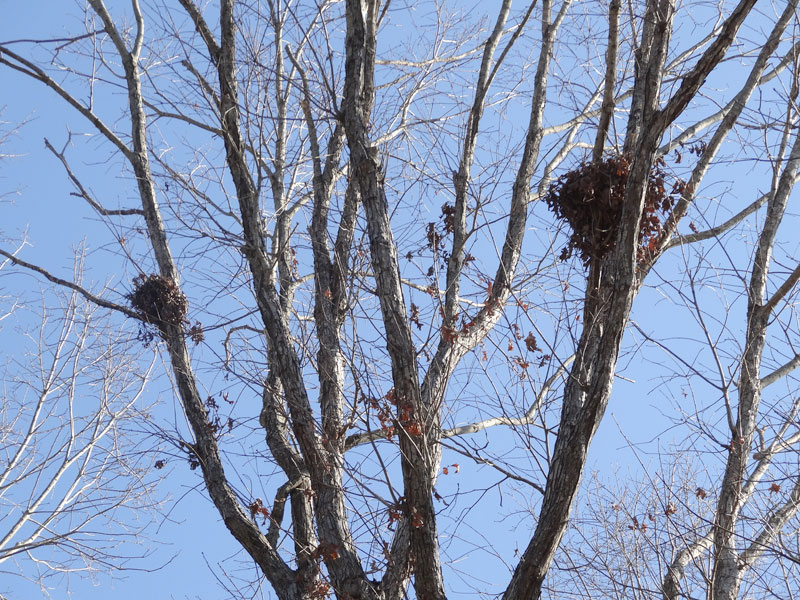
“Eastern gray squirrels love heavily forested lands loaded primarily with hardwoods, such as oaks and hickories,” he said. “These trees produce quality mast, a prime food source for squirrels. Areas with ridges and hardwood bottoms, especially creek and river bottoms, provide ideal habitat. This type habitat exists across the state.”
Hook said food availability is the key to identifying the exact habitat where squirrels are found in large numbers.
“The population shifts as food sources change. And during late season, such as in February, less mast is available and buds of trees become an example of a reliable food source. They’ll still look for acorns and that’s one reason why they’re active on the ground in late-season.”
Andrea Shipley, Mammologist for the North Carolina Wildlife Resources Commission (NCWRC) said the overall squirrel population is excellent in North Carolina.
“The gray squirrel population in North Carolina has been stable for the past 10 years, with a good population of squirrels distributed statewide,” Shipley said. “At one time, squirrels were the number one hunted game in North Carolina. Now they’ve been eclipsed by whitetail deer. But they’re an extremely popular species to hunt and thrive throughout the state. This healthy gray squirrel population could actually handle more hunting pressure.”
She said deciduous forests exist throughout the state, providing prime habitat. And these trees are prime places for gray squirrels to build nests in areas providing ample food sources where they thrive in large numbers.
Public Lands
Shipley said about 100 managed public game lands offer statewide opportunities for squirrel hunting throughout North Carolina.
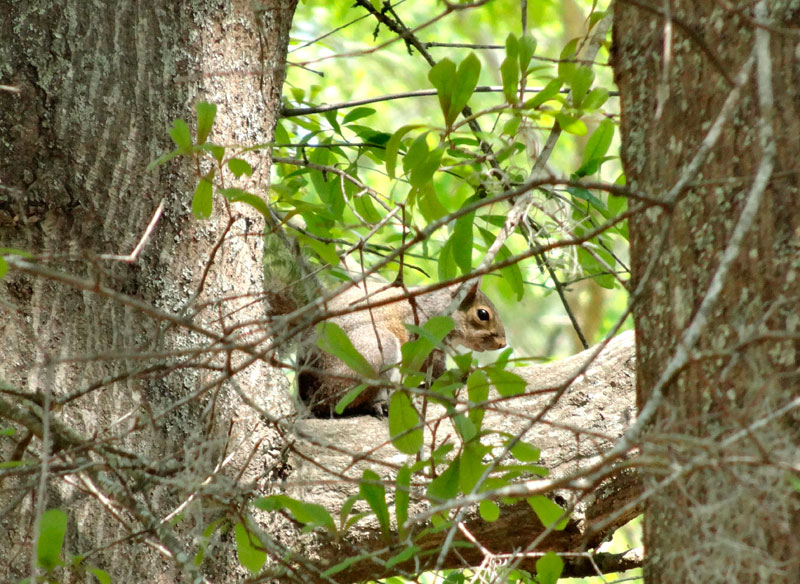
“These public hunting lands are managed for a diversity of habitat. Hunters can typically find quality squirrel habitat on most any of them,” she said. “But it’s on the hunter to scout and find the areas with the highest squirrel populations in a given year.”
She said the sheer size of some of the large National Forest tracts creates abundant areas of quality habitat. She’s hunted in areas like the South Mountain and Uwharrie Game Lands with good success.
Hook said numerous Wildlife Management Areas (WMAs) are present throughout South Carolina, providing outstanding squirrel hunting.
“The large WMAs offer excellent squirrel hunting, in part because of the abundance of habitat that exists in a single area,” he said. “The Crackerneck WMA is one excellent choice. And at 10,000 acres, it is large enough that hunters using dogs to hunt squirrels have enough room to hunt and leave plenty of room for others.”
Hook said Liberty Hill around Lake Wateree has an abundance of quality squirrel habitat, as does the Wateree River Heritage Preserve. The Marsh WMA is another large WMA with prime habitat.
“I think many of the small, unnamed WMA’s found throughout the state are an overlooked squirrel hunting resource,” he said. “Lots of these unnamed areas exist and often have an abundance of squirrels that are seldom hunted. Hunters willing to put boots on the ground and scout these areas can likely enjoy sensational hunting in an untapped resource.”
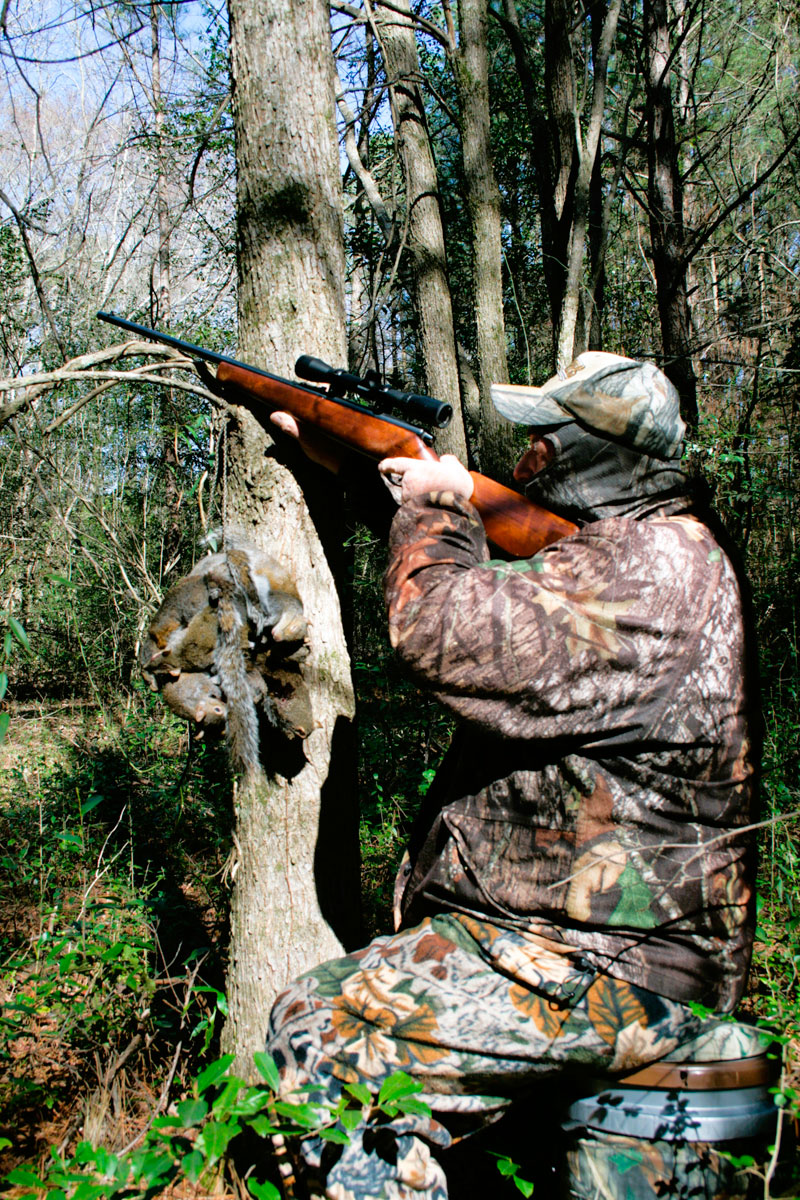
Hook said that if a hunter locates two or three such areas within a reasonable proximity of one another, collectively they can provide plenty of squirrels for outstanding hunting.”
In both states, hunters must check the specifics for all public land hunting to understand all rules, regulations or restrictions about each specific area. Both states have excellent websites detailing that information.
Hunting Tactics
Squirrel hunters without dogs generally have two major tactics to utilize: still hunting or stalking.
Chuck Porter from Sumter, SC. is a highly productive squirrel hunter. He said squirrel hunting ranks high on his long list of hunting and fishing passions.
“Squirrel hunting allows me to be in the woods from fall through winter and hone all hunting skills,” he said. “Plus, I’ve developed a passion for hunting squirrels.”
Porter said hunters can be effective still-hunting or by stalking.
“Still hunting is best described as setting up in a specific spot and waiting on squirrels to get active,” he said. “A good setup would be in a hardwood forest with lots of squirrels. If I’m hunting a new area, I’ll slip through the woods scanning for areas with an abundance of squirrel nests in a small area, as well as den trees, and set up in those places.”
He said during January and February, when mast is less abundant, he’ll key more on areas with an abundance of nests and den trees.
“I’ll be in the woods early, before sunrise, often while it’s still dark,” Porter said. “I’ll sit on a camouflaged bucket seat. But when I was younger, I’d simply lean up against a big tree, or behind a stump or log that would service the dual purpose of hiding me, and as a prop to steady my gun.”
Porter said throughout this month, squirrels spend a lot of time moving on the ground as they search for food. He’ll shoot as many on the ground as in the trees in February.
“Squirrels are easily alerted, but they have short memories, so I’ll give a place a half hour before moving,” he said. “Once I’m set, I stay motionless and use my eyes to scan the trees and ground for squirrels. It’s not uncommon to take multiple squirrels on each setup, so patience is a key.”
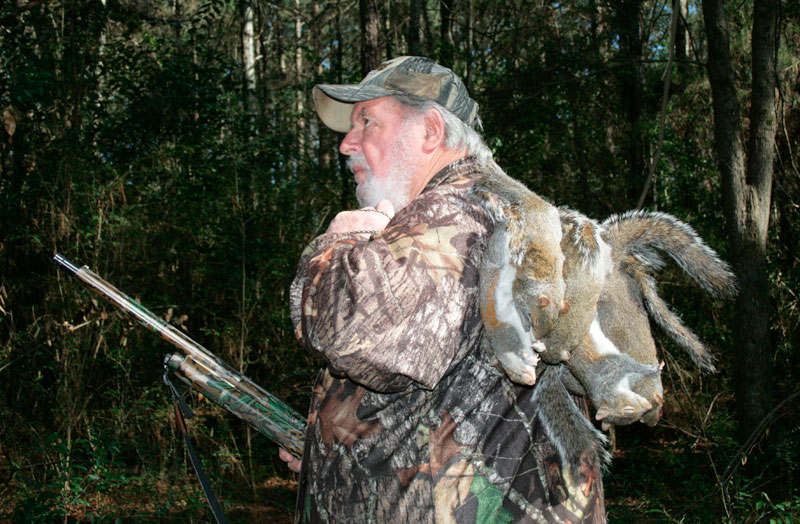
Porter said stalking is highly effective and is literally the tactic of stealthily slipping through the woods, looking and listening for squirrels.
“I use existing cover, such as trees and bushes, to mask my movement,” he said. “When I spot a squirrel, I slip within range and stop beside a tree, if available, to prop my weapon and take the shot.”
Porter said stalking is a prime early season tactic when leaves are still on the deciduous trees because the foliage shields him from curious squirrels. But during the late-season, when trees are barren, stalking can be more difficult.
“Except immediately after a rain,” he said. “Wet leaves don’t ‘crunch’ as much, and a stealthy stalk is possible. It’s a two-edge sword because the view of the trees and forest floor is significantly enhanced for the hunter, but a hunter is far more exposed to the quarry. Moving slowly on wet leaves can enable hunters to be effective.”
Blending the two tactics is practiced by many squirrel hunters, Porter said.
“Starting the day still-hunting and morphing into a dedicated stalking session blends the productivity of both that I‘ve found to be productive,” he said.
“Consider the external factors and decide on what’s appropriate,” he said. “The key is to get in the woods and enjoy this great sport.”
Choice of weapon
Chuck Porter said the choice of weapon is a personal decision and either a .22 rifle, especially matched with a good scope, or a shotgun will get the job done.
“Using a rifle increases effective shooting distance and the noise is much quieter than a shotgun” he said. “For late-season, when leaves are off the trees, a rifle is highly effective. Plus, squirrels often get active soon after a rifle shot.”
Porter said a shotgun is the ally of someone who doesn’t shoot a lot. Shotguns are more forgiving on the aim.
“It’s deadly on squirrels and I’ve been able to see multiple squirrels from a hidden location,” he said. “With a shotgun I can take the first one and then double-up on another. A squirrel running on the ground or leaping thru limbs in the tree is a difficult rifle target.
“But a shotgun blast disrupts the woods significantly. And it’s often 15 to 25 minutes before additional squirrel activity begins,” he said.
Porter said the specific habitat he’s hunting, open or thick, will impact the best weapon and tactic plan. Even the daily weather can influence his decisions. Generally, wet or cold days are good for moving around with the stalking tactic and dry and/or warm conditions may favor the still hunt tactic.

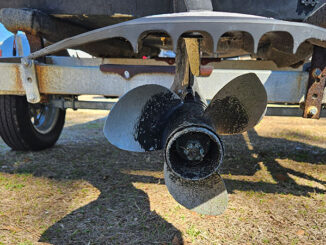
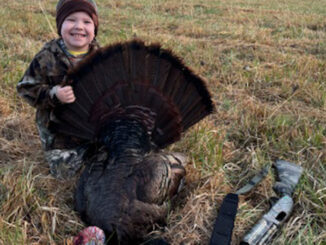


Be the first to comment